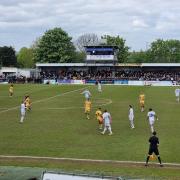
Exploding Head Syndrome is a parasomnia (as categorised by the 2005 International Classification of Sleep Disorders), often recognisable by the load ‘exploding’ noises experienced during ‘episodes’. Being a parasomnia means that it is something experienced when very close to sleep, either falling asleep or waking up.
Exploding Head Syndrome (EHS) is difficult to categorise beyond the commonly experienced symptoms, to the point at which doctors and scientists have been unable to come to a conclusion as to what actually causes EHS or how it works. The prevailing theory thus far is that EHS is caused by parts of the brain shutting down at different times, creating loud ‘noises’ as the auditory neurons are stimulated suddenly instead of being shut down — this would explain the abrupt auditory hallucinations experienced in EHS.
Other theories include:
- minor seizures in the temporal lobe
- a sensory version of a hypnic jerk (an involuntary muscle spasm occurring before falling asleep)
- a decline in delta sleep (the deepest stage of sleep), causing a startle/broken sleep
- sudden shifts in middle ear components
- repetitive auditory trauma in which the person affected begins to anticipate the noise
Although there have been insufficient studies into EHS in general, one thing which is known is that it is far more common than previously believed. It was categorised as a parasomnia occurring mainly in people over the age of 50, until a 2015 study found that one in five university students had experienced EHS in their lives. Overall, it has been estimated that up to 20% of the UK population may have experienced EHS at some point in their lives.
Another prior belief was that EHS was more common in women, which was not supported by the 2015 study. One thing it did demonstrate, however, was that more than a third of people who have experienced EHS have also experienced isolated sleep paralysis. It was also found that some people experienced EHS to a level where it did impact their lives/was physically and mentally damaging, despite being classified as a benign syndrome.
Parasomnias such as EHS have very little research material in relation to their causes and no way of treating them, despite the (now proven) high number of people affected. In the case of this parasomnia, it has been suggested that childhood EHS may cause issues such as insomnia, anxiety, and sleep paralysis in later life. Given the apparent lasting effects and lack of information as to whether or not EHS is in fact damaging (although all current research indicates that it is not damaging in and of itself, rather that the aftermath may be damaging), shouldn’t EHS and other 'benign' issues be something far more interesting to both scientists and those effected?
(Isabel King, Ursuline Academy Ilford)



























